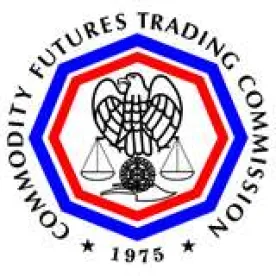On August 15, 2016, Staff of the U.S. Commodity Futures Trading Commission (“CFTC”) published a final report regarding the de minimis exception from swap dealer registration (“Staff De Minimis Report”).1 The Staff De Minimis Report highlights continued insufficient data to identify swap dealing activity. As a result, the Staff De Minimis Report does not include any Staff recommendations about whether the Commission should raise, lower, or retain the interim $8 billion de minimis threshold. As Commissioner Giancarlo notes, “[t]oday’s final staff report regarding the swap dealer de minimis exception contains no recommendations to the Commission. That is not helpful.”2 Notwithstanding the lack of concrete recommendations, the Staff De Minimis Report reveals that more robust data does exist for certain asset classes, specifically, interest rate and credit default swaps. The available data suggests that lowering the de minimis threshold to $3 billion, which occurs automatically on December 31, 2017 absent Commission action, may impact the registration status of many individual market participants, but would result in an “insignificant” increase in swap activity involving a swap dealer.3 This may suggest that the Staff believes that lowering the threshold would create a disproportionate burden on market participants compared to the limited regulatory gains.
In an unexpected move, the Staff De Minimis Report does not solicit comments from the public. This appears to contradict the CFTC’s own regulatory text requiring that “the staff of the Commission shall complete and publish for public comment a report on topics relating to the definition of the term ‘swap dealer’ and the de minimis threshold.”4 The Staff does not address why the report does not solicit public comment or how the absence of a public comment process complies with the CFTC’s own regulations. Furthermore, Staff summarizes, but does not respond to, comments received to the Staff Preliminary De Minimis Report published last year. Commissioner Giancarlo noted that he understands “that the Commission will now undertake a proposed rulemaking,” but there is no mention of a proposed rule in the Staff De Minimis Report.
Below are the key takeaways from the Staff De Minimis Report:
-
Staff continues to identify errors in the swap data reports submitted to swap data repositories (“SDRs”), which limit the utility of the data to assess the impact of the current de minimis threshold or modifications thereto.
-
Staff believes there was reliable notional value data for interest rate and credit default swap asset classes, but the same was not true for the non-financial (g., physical commodity), equity, and foreign exchange asset classes.
-
Given the concerns about data quality, Staff again relied upon other metrics, such as counterparty and transaction counts, to evaluate whether a person engages in swap dealing activity for the non-financial, equity, and foreign exchange asset classes. That said, in the section addressing whether the Commission should rely upon counterparty or transaction counts to identify swap dealing activity, the Staff explained that “the Commission may want to consider maintaining a single de minimis threshold based on notional amounts.”5 Although unclear, it appears that the Staff recommends that the Commission not adopt counterparty or transaction counts to identify swap dealing activity.
-
At the $8 billion threshold, approximately 98%, 99%, and 89% of the interest rate swap, credit default swap, and non-financial swap asset classes, respectively, involve a swap dealer. Furthermore, “only a substantial increase or decrease in the [$8 billion] de minimis threshold would have an appreciable impact on regulatory coverage. . . .”6 Although not expressly stated in the report, these findings suggest that the Staff believes that the Commission should formalize the interim $8 billion threshold.
-
The Staff needs additional time to evaluate whether swaps executed on a designated contract market or swap execution facility, or cleared swaps, should count toward the de minimis
The Staff De Minimis Report likely falls short of the regulatory requirements, as well as the expectation of many market participants. CFTC Rule 1.3(ggg)(4)(ii)(B) requires the Staff to publish a report addressing:
the potential impact of modifying the de minimis threshold, and whether the de minimis threshold should be increased or decreased; the factors that are useful for identifying swap dealing activity, including the application of the dealer-trader distinction for that purpose, and the potential use of objective tests or safe harbors as part of the analysis; the impact of the [current exclusions] . . . from the dealer analysis, and potential alternative approaches for such exclusions; and any other analysis of swap data and information relating to swaps that the Commission or staff deem relevant to this rule.
Even applying a generous interpretation, it is unclear how the Staff De Minimis Report meets the standards specified in the rule.
1 A copy of the Staff De Minimis Report is available here: http://www.cftc.gov/idc/groups/public/@swaps/documents/file/dfreport_sddeminis081516.pdf.
2 Commissioner Giancarlo’s statement is available here: http://www.cftc.gov/PressRoom/SpeechesTestimony/Giancarlostatement081516.
3 Staff De Minimis Report at 21.
4 See CFTC Rule 1.3(ggg)(4)(ii)(B). Although the Staff published a November 18, 2015 preliminary report for public comment (“Staff Preliminary De Minimis Report”), Staff made clear that the preliminary report was not the final report specified in CFTC Rule 1.3(ggg)(4)(ii)(B). In fact, the Staff Preliminary De Minimis Report specifically notes that “[a]fter considering the comments it receives on this Preliminary Report, staff will complete and publish for public comment a final report.” Staff Preliminary De Minimis Report at 3. A copy of the Staff Preliminary De Minimis Report is available here: http://www.cftc.gov/idc/groups/public/@swaps/documents/file/dfreport_sddeminis_1115.pdf.
5 Staff De Minimis Report at 25.
6 Staff De Minimis Report at 23.



 />i
/>i


